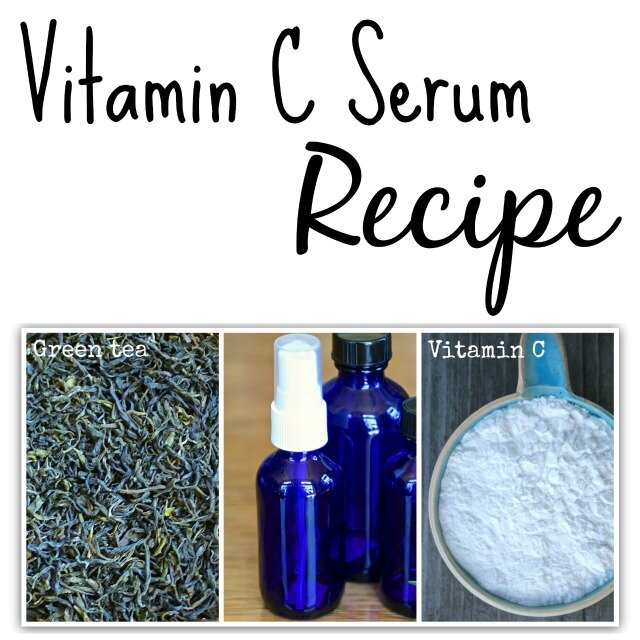Vitamin C Skin Serum
Vitamin C is one of the very best nutrients we can apply to our skin.
This is a recipe from my new book Naked: Botanical Recipes for Vibrant Skin and Healthy Hair. You can download the recipe here. Also, if you would like some really fun and free label downloads for your herbal creations, check out our Pinterest page Free Herbal Labels!
Prolonged, consistent use of Vitamin C Serum will cause the body to produce more collagen. Collagen is the main structural protein found in the skin and is essential for skin repair after injury. When using this serum, the skin will likely look plumper, more moisturized, tighter, and less wrinkled. Vitamin C is also valuable for lightening dark spots on the skin and helping to heal acne and scars. Vitamin C is an antioxidant, protecting the skin from free-radical damage. It can take 3–6 months to see results of collagen production, although some people report results much sooner.
For the serum to be effective, the pH needs to be 3.5–3.0. Make sure it doesn’t go below 3.0 as it can be irritating or damaging to the skin. To check acidity, use a pH strip. Vitamin C can cause irritation, so start with a low dilution, such as 5%. Every two weeks, raise your vitamin C content an additional 5% in your serum until you get to between 10–20%. If the serum is stinging or causing redness, lower the dilution. If you have sensitive skin, test on your inner arm before applying to the face.
Combining vitamin C with vitamin E (the water-soluble form is best for this formula), and antioxidant herbs such as green tea will increase the effectiveness of the serum. Vitamin C oxidizes quickly so the serum should be made in frequent, small batches. For maximum freshness and bioavailability, make a new batch every three days or so. The serum will tend to last longer with other antioxidants such as green tea and vitamin E. If the serum begins to rise or turn yellow, or the pH rises over 3.5, discard it and make a new batch.
Ingredients:
Measure by volume:
Vitamin C powder (either ascorbic acid or L-ascorbic acid), see amounts on the Vitamin C Serum Solutions Chart below
½ teaspoon vegetable glycerin
¾ teaspoon vitamin E (optional, water-soluble is preferable)
1 cup boiling water
Measure by weight:
¼ ounce green tea leaves
You Will Need:
Measuring spoons
Strainer
Dark glass jars with tight-fitting dropper lid or sprayer
pH strips
Label
Teapot or canning jar
Small bowl
Spoon
Directions:
Make a strong infusion of your green tea by first boiling the water.
Pour 1 cup of water over .25 ounce green tea leaves.
Let steep for two hours and strain.
Let cool to room temperature before adding other ingredients.
You can freeze the excess green tea infusion in ice cube trays for later use.
Mix 1 ounce of green tea with vegetable glycerin and vitamin E (if desired) and store in a dark bottle. For simplicity, I call this the “antioxidant base blend.” Store this blend in the refrigerator to use as your carrier serum for the vitamin C.
You can play with the amount of vegetable glycerin that you prefer. The more glycerin, the more moisturizing the formula is. In excess, glycerin can leave a tacky feeling to the skin.
In a smaller bottle (I like to use a dark glass spray bottle), add your exact amounts of the antioxidant base blend and the vitamin C. Shake well until the vitamin C has dissolved completely.
Check your pH to make sure it is 3.5–3.0. If your blend is too acidic (lower than 3.0), add a pinch of baking soda. If it is too alkaline (above 3.5), add a pinch of citric acid.
Shake well before applying, as the vitamin E will not dissolve in the formula.
Apply this serum at night after cleansing and toning and before you apply a moisturizer. If desired, you can use it all over your body, focusing on problem areas such as dark spots, acne, scars, and the face and hands.
Store in a cool dark location such as the medicine cabinet.
You can download the recipe here.
© Elaine Sheff, Clinical Herbalist (AHG)



